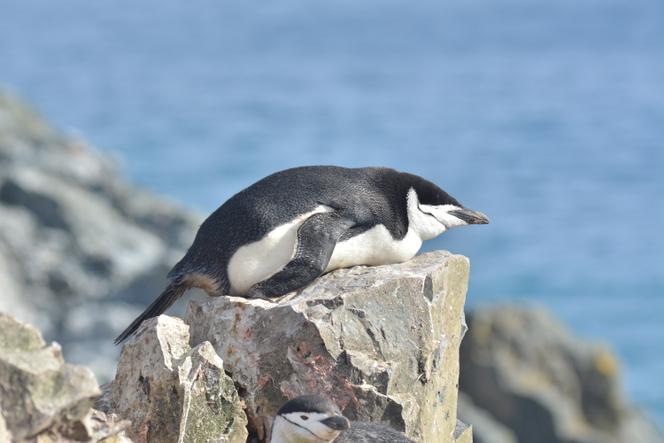


We call it a Napoléonic (power) nap. Ten to 20 minutes of restful sleep, and you're ready to invade Austria or, more realistically, settle for four-hour nights of sleep. But that's nothing to be proud of. "Napoléon was a small-time player," said Paul-Antoine Libourel, research engineer of the French National Center for Scientific Research (CNRS) at the Lyon Neuroscience Research Center.
On Friday, December 1, the scientist published an article in the journal Science with astounding results. He and his collaborators discovered that, in Antarctica, chinstrap penguins sleep in average sessions of four seconds. The bird goes through around 10,000 of these sessions a day, for a total of 11 hours of sleep. These observations have shattered all previous records.
This record-breaking achievement is first and foremost a technical feat, humanly speaking. A few years ago, the engineer developed a miniature polysomnograph, which won him the CNRS Crystal Medal for Innovation in 2021. On a card measuring 2 centimeters by 1 centimeter, he can record an animal's brain, heart, muscle and eye activity. "Like a sleep clinic, but in miniature," he said. A second, slightly larger mini-GPS device is added, capable of recording the animal's position as well as its movements, outside temperature, and pressure. Finally, it can store this information for several days, or even weeks. This little gem caught the attention of Professor Won Young Lee at the Polar Research Institute in Incheon, South Korea. This marine biologist studies Antarctic birds and wanted to understand what the blinking pattern he observed in chinstrap penguins corresponded to. "He contacted me and we decided to collaborate," said Libourel.
They faced many obstacles. First, they had to ensure that the devices, glued to the birds, would withstand extreme temperatures and dives to depths of several hundred meters. Second, they had to equip the animals. And finally, they had to recapture them to collect the data. Of the 20 penguins equipped, 19 have been found and 14 have delivered all the desired information for 11 full days, recorded in December 2019. The study has revealed some impressive results.
The first lesson is the extreme brevity of the penguins' naps. 75% of sessions last less than 10 seconds, for an average of four seconds − sequences during which both cerebral hemispheres are often asleep, as in humans, but also frequently with only one hemisphere asleep, while the other remains awake. Another lesson was that the penguins were engaged in a perpetual
"drowsiness" in their microsleeps, which can happen both lying down or standing up.
You have 25% of this article left to read. The rest is for subscribers only.
